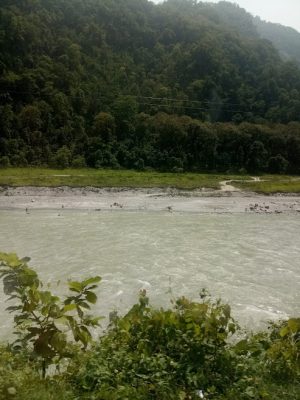On March 4, the irrigation department of the government of the eastern Indian state of West Bengal acquired around 1,000 acres of land to dig an additional two canals under the Teesta Barrage Project to draw water from the Teesta River for agricultural purposes. Under the plan, “a 32 km-long canal to draw water from the Teesta and the Jaldhaka will be dug till Changrabandha of Cooch Behar district. Another canal, which will have a length of 15 km, will be built on the left bank of the Teesta,” The Telegraph reported, citing an unnamed source in the irrigation department.
India and Bangladesh share 54 transboundary rivers. An Indo-Bangladesh Joint Rivers Commission (JRC) was set up in 1972 to “ensure the most effective joint effort in maximizing the benefits from common river systems.”
So far, the two countries have reached agreement on sharing the waters of only one river, the Ganga. It took the two sides 25 years of negotiations to achieve this success. The treaty for sharing the waters of the Ganga at Farakka was signed in 1996, which eased somewhat tensions between the two countries.
Success with regard to finalizing an agreement on the Teesta River remains elusive, however.
The Teesta, which flows through the Indian states of Sikkim and West Bengal before entering Bangladesh, is Bangladesh’s fourth largest river and also the main river of northern Bangladesh. Its floodplain covers an area 2,750 sq km and supports over 10 million people and 14 percent of Bangladesh’s total crop production.
India has built dams across the Teesta, and these have impacted water flow into Bangladesh. Irrigation of over 100,000 hectares of land is “severely affected” by India’s withdrawal of the Teesta’s waters upstream. It is estimated that before the dams were constructed, the daily average flow of water into Bangladesh was 6,710 cusecs (cubic feet per second). A flow of 5,000 cusecs of water is needed for irrigation purposes, but Bangladesh is reportedly receiving only 1,200-1,500 cusecs during the dry season. This drops to 200-300 cusecs at times.
At the 25th JRC meeting in 1983, India and Bangladesh agreed on an ad hoc arrangement under which Bangladesh was to receive 36 percent of the Teesta’s waters. However, Bangladesh has never received its due share of the Teesta’s waters during the dry season.
After much discussion, Bangladesh and India reached an agreement in 2011 over sharing the Teesta’s waters, under which Bangladesh would receive 37.5 percent of the water while India would get 42.5 percent. The final 20 percent would remain in the river to maintain the ecological balance.
However, this agreement was not signed due to opposition from West Bengal Chief Minister Mamata Banerjee. In the years since, no headway has been made and the agreement has fallen “prey to the unpredictabilities of central and state level politics in India.”
India’s plans for the construction of two canals diverting the waters of the Teesta River will further reduce water flow into Bangladesh.
According to biodiversity expert Kallol Mustafa, the planned canals are a clear violation of international norms of transboundary river water management as India had committed at the 37th meeting of the Joint Rivers Commission in 2010 to not “construct any major structure for diversion of water for consumptive uses upstream of (the Gajoldoba) barrage except minor irrigation schemes, drinking water supply, and industrial use.”
Responding to the Indian plan on the two canals, Bangladesh’s Foreign Ministry said that it would “prepare a paper on the issue with consultation of our water resource ministry and the JRC.” It would then raise the matter with India, spokesperson Seheli Sabrin said.
Mohammad Abul Hossen, a member of the JRC on the Bangladeshi side, pointed out that India did not inform Bangladesh of its plans. “We are going to send a protest letter to India expressing our concerns and mentioning how the move will affect the ecosystem of the Teesta downstream,” he said.
India’s withdrawal of additional water will lead to the drying of the Teesta River, which will seriously threaten the biodiversity of the river and of its adjacent areas. It would hamper the livelihoods of tens of thousands of people.
According to Mohammad Shah Alam, additional director of the Department of Agricultural Extension in the Rangpur region, farming has already been adversely affected. Floodplains and shoals have become barren and cultivation has become more expensive. A farmer has to fork out 10 times the amount he used to spend earlier to get a pump to irrigate his land, he told Daily Star. With the land drying, unemployment has grown. Farmers are rendered jobless for months.
Meanwhile, Bangladesh is working on a Plan B with regard to the Teesta. It is working with China to “dredge and embank large portions of the Teesta River so that it formed a single manageable channel.” India has long been opposing this project considering its security concerns.

































